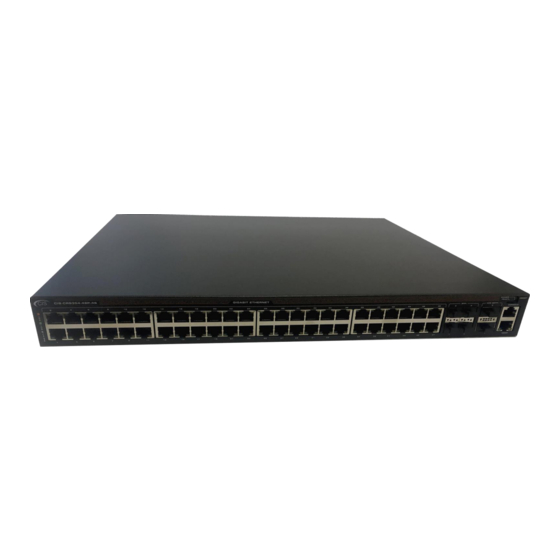
Advertisement
CIS—CRS354-48P
Welcome
Thank you for choosing CIS! This quick setup guide will assist you with getting your CIS switch up and
running. For more detailed configuration, please check the user manuals located on our website. If you
have any questions, please do not hesitate to contact our support team.
The CIS-CRS354-54P switch is equipped with 48 Gigabit Ethernet ports (with Auto MDI/X), 4 SFP+ ports, 2
QSFP+ ports, and an RJ45 serial port that is disabled by default. The top LEDs will show green when using
low voltage PoE, and red when using high voltage PoE.
Powering the Switch
Connect the included IEC power cable to the rear of the switch.
Switch Setup
Routers/Switches
with SFP Ports
Computers/Devices
Router or Switch
Connect your router or upstream switch to any of the Ethernet ports, or use an SFP or SFP+ connection if
your device supports it. Connect your devices to the remaining ports
Advertisement
Table of Contents

Summary of Contents for CIS CRS354-48P
- Page 1 CIS—CRS354-48P Welcome Thank you for choosing CIS! This quick setup guide will assist you with getting your CIS switch up and running. For more detailed configuration, please check the user manuals located on our website. If you have any questions, please do not hesitate to contact our support team.
- Page 2 VLANs, and static IP by accessing the web interface. 1. Log into your router. Access the DHCP leases. If you’re using a CIS router, select IP from the left toolbar, DHCP Server, then click the Leases tab. Locate the switch in the leases, then make note of it’s current IP address.
- Page 3 Hold this button during while the device is powered off, then apply power. Keep holding until the USR LED light starts flashing, (5 seconds) then release the button to reset to the default CIS configuration. You can use this procedure if you have forgotten the password to access the device, or simply wish to return the unit to its default configuration state.










Need help?
Do you have a question about the CRS354-48P and is the answer not in the manual?
Questions and answers